Register for free and continue reading
Join our growing army of changemakers and get unlimited access to our premium content
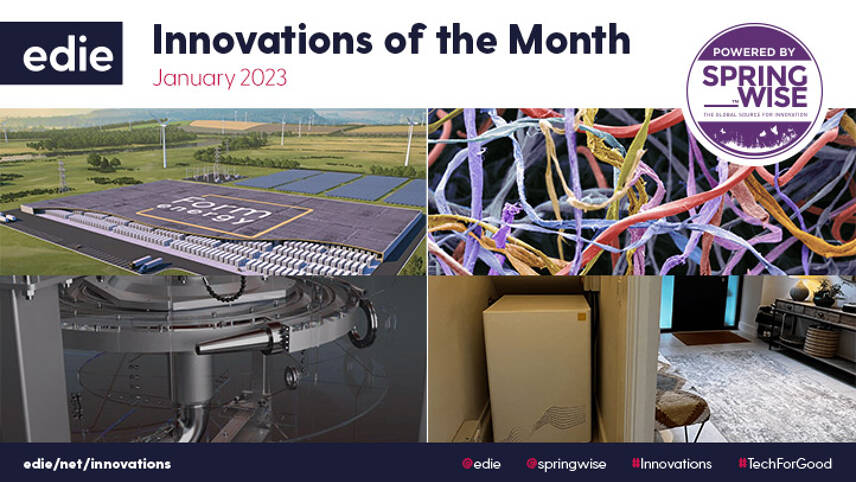
According to the International Energy Agency (IEA), energy storage needs to be rapidly scaled up to meet the need for flexibility in a decarbonised electricity system. Today, much of the conversation about energy storage revolves around batteries – particularly the lithium-ion (li-ion) variety. But the most used storage technology is currently pumped-storage hydropower. And other technologies beyond li-ion batteries also show promise.
In line with this, our first two innovations of the year both explore new methods of energy storage. The first uses iron-air batteries to store energy at the grid level, while the second is using purpose-built shafts to store hydrogen underground.
Stored energy is only sustainable if it was generated sustainably, and our third innovation represents a new way to generate electricity cleanly. The novel technology turns waste heat from traditional engines into power using a small isothermal engine. Elsewhere, the cement industry – one of the hardest to abate – needs to make significant strides to reach net zero. Could the world’s first carbon-negative Portland cement, our fourth innovation, play a key role?
Additionally, sustainability is not just about changes at the industrial level. We also need to push for more sustainable technologies in the home, and our fifth and sixth innovations focus on two common household appliances. A study has shown how microfibres harvested from washing machines can be upcycled into new products, while a startup has developed a smart zero-emissions electric boiler.
Finally, our seventh and eighth innovations look at ways to close the loop on food waste.
A revolutionary iron-air battery for grid-scale energy storage
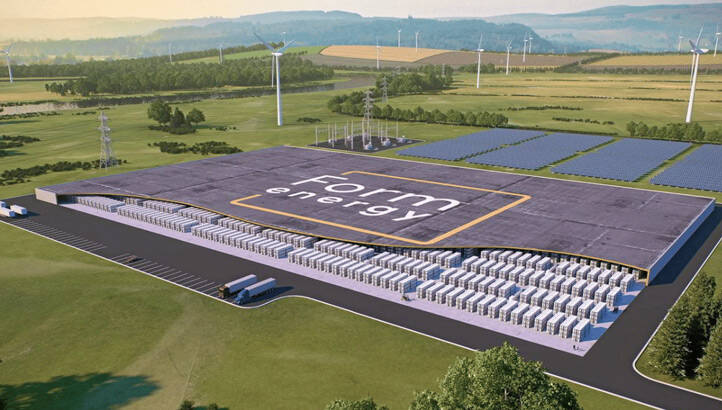
Image: Form Energy
Lithium-ion (Li-ion) batteries were first developed in 1985 and have since become ubiquitous in products such as electronics, toys, wireless headphones, small and large appliances, electric vehicles, and electrical energy storage systems. However, there are issues with the batteries, not least the fact that they contain numerous toxic metals that make their manufacture, recycling, and use environmentally problematic.
Now, startup Form Energy, which was spun out of the Massachusetts Institute of Technology (MIT), has found a way to make metal-air batteries more efficient. Metal-air batteries – such as the zinc-air batteries currently used in hearing aids – were first designed in 1878 and use fewer toxic materials. However, they are not rechargeable because they corrode quickly. Now, the MIT researchers have found a way to reverse the corrosion process to create rechargeable iron-air batteries.
Iron was chosen for use in the new design because it is cheap and abundant, and the researchers refer to their process as ‘reverse rusting’. They estimate that the new batteries could cost around $20 per kilowatt-hour, compared to up to $200 per kilowatt-hour for li-ion batteries. The iron-air batteries are heavier than li-ion batteries and have a slow charge and recharge cycle, making them unsuitable for use in EVs. However, the company claims they will be perfect for grid-level energy storage, as they excel at long-term energy storage and can deliver more than 3 megawatts in output capacity per acre of batteries.
Underground hydrogen storage, featuring gravity
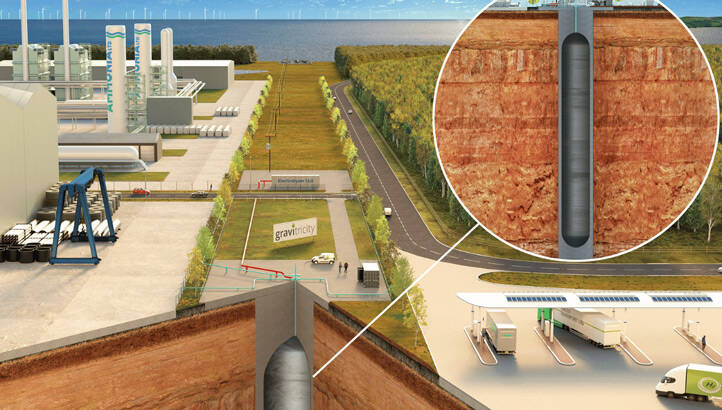
Image: Gravitricity
Increasingly, green hydrogen is touted as a crucial element in the world’s journey to net-zero. But storing the clean fuel remains a challenge. Now, UK startup and underground energy storage specialist Gravitricity is completing its design for purpose-built underground lined rock shafts, which would enable efficient underground hydrogen storage.
Gravitricity believes its storage technology, which it calls FlexiStore, is a ‘Goldilocks’ solution to the obstacles facing hydrogen storage. Unlike above-ground hydrogen storage alternatives, FlexiStore provides a much bigger and more secure system. It is also more flexible than subterranean salt caverns – another commonly suggested method for underground storage.
One FlexiStore could store the green hydrogen generated by an offshore wind farm, but this would fill up daily and would need to be emptied regularly. To make the process more efficient, multiple stores could be constructed so that large amounts of wind energy that would otherwise go to waste could be soaked up. And unlike salt cavern storage, which naturally requires specific geological environments, Gravitricity’s stores can be built wherever they are needed.
Gravitricity has already identified many sites for its UK pilot project and is discussing the project and future commercial schemes with site owners.
Converting waste heat into electricity
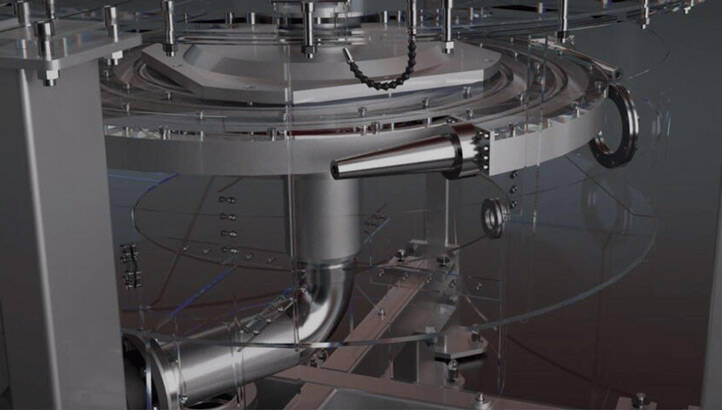
Image: Luminescent
Various studies have estimated that around 20 to 50% of industrial energy consumption is discharged as waste heat – and up to 30% of this could be harnessed and utilised. Looking to make use of the heat emitted by traditional engines, Israel-based startup Luminescent has built a system that produces zero-emission electricity.
A small, isothermal engine upcycles waste heat and is designed to fit alongside conventional large engines and generators to send electricity back to the grid. If needed, the Luminescent device stores between eight and 20 hours of renewable energy.
The new device uses a heat transfer liquid to gather and move the heat emitted from another engine into the upcycling system. The liquid is then mixed with either air or gas and put under pressure, which causes the material to expand – this expansion converts the liquid into kinetic energy that powers a generator. The generator can then run other devices and systems, store power, or send electricity back to the grid.
Groundbreaking carbon-negative Portland cement
Concrete is the most widely used manufactured material on the planet and cement is its key ingredient. More than four billion tonnes of the material are used globally each year, generating around 2.5 billion tonnes of carbon dioxide (CO2) annually – about 8% of the global total. Cement production is so energy intensive because it uses enormous kilns that are continuously heated to around 1,500 degrees Celsius. This high heat powers the process that turns limestone (CaCO3) and clay into cement, but also releases high levels of CO2.
Startup Brimstone is hoping to change this with a process that produces an identical product to conventionally manufactured cement, but without releasing CO2. Brimstone accomplishes this by sourcing lime (CaO) from calcium silicate rocks instead of limestone. The calcium silicate rocks do not contain embedded CO2, so do not release the gas as a waste by-product. The process also produces magnesium species as a waste product. This passively absorbs CO2, making the entire process net carbon negative, even when accounting for the fuel used.
Carmichael Roberts of Brimstone investor Breakthrough Energy Ventures, points out that, “Not only has Brimstone figured out a way to eliminate the [CO2] emissions in [the cement manufacturing] process – [its] innovation creates an opportunity where our built environment could be a net sink for carbon. This means that the buildings and bridges that we build with carbon-negative Brimstone Portland Cement can be a part of the climate solution instead of the intractable liability they are today.”
Collecting and upcycling microfibres from laundry

Image: XEROS Technology
Microfibres are one of the most common forms of microplastic found in the environment. They consist of tiny threads that break off from textiles in the normal course of washing, drying, and as a result of wear and tear. Microplastics are increasingly acknowledged as a major environmental problem having been found in the ocean, on the summit of Mount Everest, and even in mother’s milk. Now, startup Xeros Technology is hoping to prevent this situation from getting worse by devising ways to upcycle captured fibres.
Xeros already manufactures a filter – compatible with any washing machine – that captures 99% of microplastics shed during washing. Now, the company has teamed up with the University of Surrey to develop a method for upcycling the micro and nano fibres that are collected. These fibres are made from plastics, and the researchers have devised a way to release the carbon contained in the fibres, which can then be reused.
The method takes microfibre waste collected from commercially available filters and produces clean hydrogen and solid carbon nanomaterial. These can then be used in various essential products including batteries, solar cells, and medical devices. The partnership with Xeros will allow the researchers to develop ways to scale up their process and develop a commercial-scale solution.
Zero-emission boilers for homes

Image: Tepeo
With around 17% of all UK carbon emissions coming from home heating as of 2019, it’s time for a new approach. One way to decarbonise home heating is to electrify it, but this imposes additional peak loading on the electricity grid and reduces flexibility in the system.
The alternative solution that startup Tepeo has come up with would electrify heating but decouple electricity demand from consumption – giving the grid more flexibility. Tepeo would accomplish this with its Zero Emission Boiler (ZEB), an electric boiler that works like a battery. The ZEB’s smart tech charges its core using green energy at the cheapest time of the day. Then, it releases the heat to radiators and hot water tanks as needed.
The ZEB uses a closed-loop system in which the air picks up heat from the core and then transfers it to a heat exchanger, with the central heating water running through it. Specially designed channels within the core optimise how heat is transferred around the system. At the same time, the ZEB uses machine learning (ML) to project a heating usage profile for the house and then plan an optimised charging schedule – taking into account the electricity tariff at different times, grid carbon intensity forecast, available green energy, and charge rate.
More sustainable fertiliser

Image: Aquagrain
At least 30% of all food produced each year is wasted, with some studies putting the figure closer to 40%. This is before we even account for organic waste which would not have ended up as food for humans, including animal food, animal waste and plant byproducts.
Seeking to tackle this challenge while also reducing the agriculture sector’s reliance on chemical fertilizers is Ipswich-based Aquagrain. It has developed a process which sterilises food waste and converts it into an organic material that can absorb up to 30 times its mass in water. This material can be applied to crops, reducing the need for chemical fertiliser and also ensuring more efficient water distribution.
This latter quality makes Aquagrain a promising solution for warmers working in arid or water-stressed regions. Trials in the Middle East have resulted in yield increases of up to 40% and a reduction in water requirements of up to 50%.
Aquagrain was one of four winners of the Foodtech Challenge. The winners were announced this month at Abu Dhabi Sustainability Week and will share a $2m grant funding prize.
AI-enabled restaurant cameras to tackle food waste
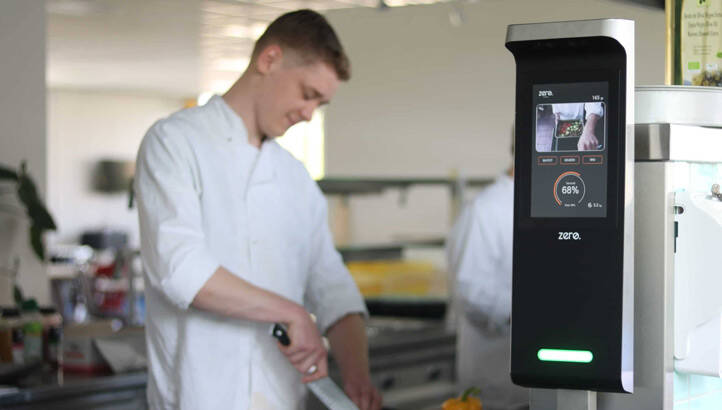
Image: Orbisk
Staying on the topic of food waste, in many developed nations, like the UK, the majority of the food waste produced domestically each year occurs at the point of customer use. In other words, our restaurants, cafes and groceries account for more waste than that generated across the supply chain.
One digital solution to this challenge has been posed by Orbisk, which provides cameras and artificial intelligence (AI) software to professional kitchens. The cameras, after observing food waste patterns, can quantify and predict food waste trends. This can help kitchen staff in not ordering or preparing excess food, or modifying menus to downsize often-wasted elements of meals.
Orbisk claims that, in trials of the systems, the typical business will reduce food waste by at least 50% in its first year.
Springwise is the global innovation intelligence platform for positive and sustainable change. With a growing database of 11,000+ innovations, we are the place of record for innovation that matters. Springwise.com.


From a fairly superficial reading of this stuff, it would appear to have been written by people with no knowledge of thermodynamics or agriculture. I hope no-one is fooled into believeing half the advances touted here. Most sound highly dubious!